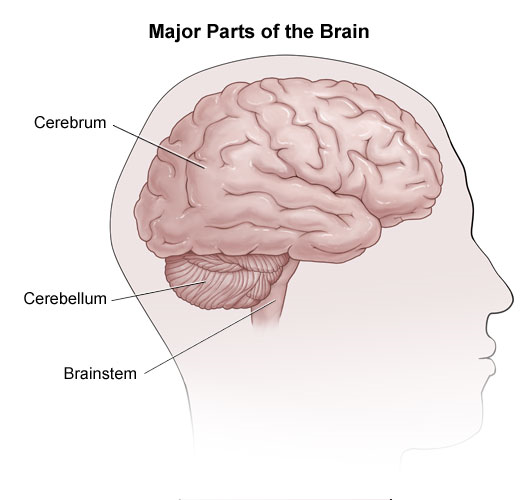A stroke on the right side of the brain can cause damage to the left side of the body. It can also affect cognitive functions such as attention, perception, and memory.
Additionally, speech and language difficulties, as well as problems with visual perception and spatial awareness, are common. Individuals may also experience difficulty with emotions, with some becoming overly emotional or having difficulty controlling their emotions.
Overall, a stroke on the right side of the brain can have wide-ranging effects on both physical and cognitive functioning, as well as emotional well-being.
This highlights the importance of early intervention and rehabilitation to maximize recovery and improve quality of life.
:max_bytes(150000):strip_icc()/VWH_Illustration_Signs-of-Right-Sided-Stroke_Illustrator_Ellen-Lindner_Final-285a807d8c00432fa53894e8ce4a361c.jpg)
Credit: www.verywellhealth.com
Understanding Stroke On The Right Side Of The Brain
Stroke on the right side of the brain can lead to damage affecting the left side of the body. Cognitive functions such as spatial awareness, attention, and memory can also be compromised. In addition, emotions and ability to recognize faces may also be impacted.
Understanding Stroke on the Right Side of the Brain When it comes to understanding stroke, it's important to know that it can affect different parts of the brain, resulting in various symptoms and outcomes. In this article, we will specifically focus on stroke on the right side of the brain.
This type of stroke can have significant effects on a person's physical and cognitive abilities, leading to various symptoms that may require specialized treatment and care. H3: Symptoms of Right-Side Brain Stroke A stroke on the right side of the brain can manifest through a range of symptoms.
Some of the common symptoms include:
1. Paralysis or Weakness: One of the most noticeable symptoms of a right-side brain stroke is paralysis or weakness on the left side of the body. This can affect the movement of limbs, making it difficult to carry out daily activities.
2. Impaired Spatial Awareness: Individuals with a right-side brain stroke may experience difficulties with spatial awareness. This can lead to problems with judging distances and perceiving the surrounding environment accurately.
3. Visual Disturbances: Right-side brain stroke can cause visual disturbances, such as loss of vision in the left visual field. This can impact a person's ability to see objects or people on their left side.
4. Lack of Attention and Awareness: Stroke on the right side of the brain can result in reduced attention span and decreased awareness of one's deficits. Individuals may neglect objects or people on their left side and struggle with maintaining focus.
5. Emotional and Behavioral Changes: People who have experienced a right-side brain stroke may also undergo emotional and behavioral changes. These can include flat affect, depression, impulsiveness, and difficulty in understanding and expressing emotions.
Causes of Right-Side Brain Stroke Understanding the causes of right-side brain stroke is essential in order to prevent its occurrence and promote a healthier lifestyle. Some of the primary causes include:
1. Blood Clots: Blood clots can block the flow of blood to the brain, resulting in a stroke. Conditions such as atrial fibrillation or atherosclerosis can increase the risk of blood clots and consequently increase the likelihood of a right-side brain stroke.
2. Cerebral Hemorrhage: A ruptured blood vessel in the brain can cause bleeding, leading to a stroke. Trauma or chronic conditions like hypertension can contribute to cerebral hemorrhage and subsequent right-side brain stroke.
3. Arteriovenous Malformation (AVM): Arteriovenous malformation is a congenital condition where abnormal connections form between arteries and veins in the brain. This can weaken the blood vessels and increase the risk of a stroke, including right-side brain strokes.
4. Lifestyle Factors: Unhealthy lifestyle habits such as smoking, excessive alcohol consumption, a sedentary lifestyle, and a poor diet can contribute to the development of risk factors for stroke, including right-side brain strokes.
5. Pre-existing Medical Conditions: Certain medical conditions, such as high blood pressure, diabetes, high cholesterol, and heart disease, can increase the likelihood of experiencing a right-side brain stroke.
In summary, a stroke on the right side of the brain can lead to a range of symptoms and challenges for individuals. By recognizing these symptoms and understanding the causes, we can take appropriate measures to prevent or manage right-side brain strokes.
It is crucial to prioritize a healthy lifestyle and regularly seek medical advice for any underlying conditions that may increase the risk of stroke.

Credit: www.hopkinsmedicine.org
Effects Of Right-side Brain Stroke
When a stroke occurs in the right side of the brain, it can lead to various effects that significantly impact an individual's daily functioning. Understanding the specific implications of a right-side brain stroke is crucial in providing appropriate care and support for affected individuals. The following sections detail the common effects of right-side brain stroke, including motor impairments and sensory deficits.
Motor Impairments
After a right-side brain stroke, individuals may experience motor impairments that affect the left side of their body. These include weakness or paralysis in the left arm and leg, as well as difficulties with coordination and balance. Simple tasks, such as walking or grasping objects, may become challenging due to the loss of motor control on the left side.
Sensory Deficits
Sensory deficits are also common following a right-side brain stroke. Affected individuals may experience changes in their ability to perceive touch, temperature, and pain on the left side of the body. Additionally, they may encounter challenges with spatial awareness and body positioning, leading to difficulties in navigating their environment and interacting with objects.
Cognitive And Communication Challenges
A stroke on the right side of the brain can result in cognitive and communication challenges. Areas such as language processing, attention, and memory may be affected, leading to difficulty speaking, understanding, and processing information. Rehabilitation therapies can help individuals regain and improve these functions.
Introductory Paragraph
When an individual experiences a stroke on the right side of their brain, it can result in various cognitive and communication challenges. These challenges can significantly impact a person's daily life as they navigate difficulties with attention, memory, language, and speech. In this section, we will explore the specific cognitive and communication challenges commonly associated with a stroke on the right side of the brain.
Difficulty With Attention And Memory
After a stroke on the right side of the brain, individuals may encounter difficulties with attention and memory. This can manifest in the form of trouble staying focused on tasks or conversations, losing track of time, and struggling to remember recent events or new information. Memory challenges may include trouble recalling names, dates, or specific details. Keeping organized and following through with tasks can also become more challenging.
Language And Speech Problems
A stroke on the right side of the brain can also lead to language and speech problems. Individuals may experience difficulties in understanding spoken or written language, causing them to misunderstand or misinterpret what others say. Expressing oneself verbally or in writing can become challenging as well. Some common language and speech difficulties include:
- Difficulty finding the right words or "word-finding" difficulties
- Speaking in a slower, less fluent manner
- Trouble with syntax and grammar
- Struggling with tongue movements, resulting in unclear speech
- Difficulty comprehending jokes or sarcasm
These language and speech problems can make communication more challenging and potentially impact a person's social interactions and relationships. It is important for individuals experiencing such difficulties to seek appropriate support and therapy to help improve their language and speech abilities.

Credit: www.healthline.com
Rehabilitation And Recovery Strategies
After experiencing a stroke on the right side of the brain, it is crucial to implement effective rehabilitation and recovery strategies. These strategies aim to help individuals regain lost skills and improve their overall quality of life. Various therapies, such as physical therapy and speech and language therapy, play a vital role in the recovery process. Let's explore these strategies in more detail.
Physical Therapy And Rehabilitation
Physical therapy is a cornerstone of stroke recovery. It focuses on rebuilding strength, coordination, and mobility on the affected side. Through a tailored exercise program, physical therapists assist individuals in regaining control over their muscles and improving balance. The goal is to enhance their independence in daily activities.
In physical therapy sessions, individuals may engage in a range of exercises, including:
- Stretching and flexibility exercises to improve joint mobility
- Strength training to rebuild muscle mass and promote overall physical stability
- Balance and coordination exercises to enhance stability and prevent falls
- Gait training to improve walking patterns and restore a normal stride
Moreover, physical therapists may use specialized equipment like parallel bars and gait belts to support patients during their exercises. By gradually increasing the difficulty and intensity of the exercises, individuals regain strength and improve motor skills.
Speech And Language Therapy
Stroke on the right side of the brain can often result in communication difficulties. In such cases, speech and language therapy is crucial for rehabilitation. This therapy focuses on improving speech production, comprehension, and overall language skills.
A speech and language therapist evaluates the individual's specific challenges and designs a personalized therapy plan. Using various techniques and exercises, they help individuals regain or develop new communication strategies. Some techniques include:
- Articulation exercises to improve speech clarity and pronunciation
- Language drills to enhance word retrieval and vocabulary
- Reading comprehension exercises to improve understanding and comprehension skills
- Writing exercises to foster written expression and communication
Speech and language therapy also focuses on non-verbal communication methods, such as gestures and alternative communication devices, when necessary. By working with a speech and language therapist, individuals can regain their self-confidence and improve their ability to express themselves effectively.
Conclusion
Understanding the function of the right side of the brain is crucial for comprehending the impact of a stroke. By recognizing the specific areas of the brain that are affected, we can better understand the resulting symptoms and the necessary treatment and care.
It is important to seek immediate medical attention and support for those who have experienced a stroke in the right side of their brain.








0 Comments